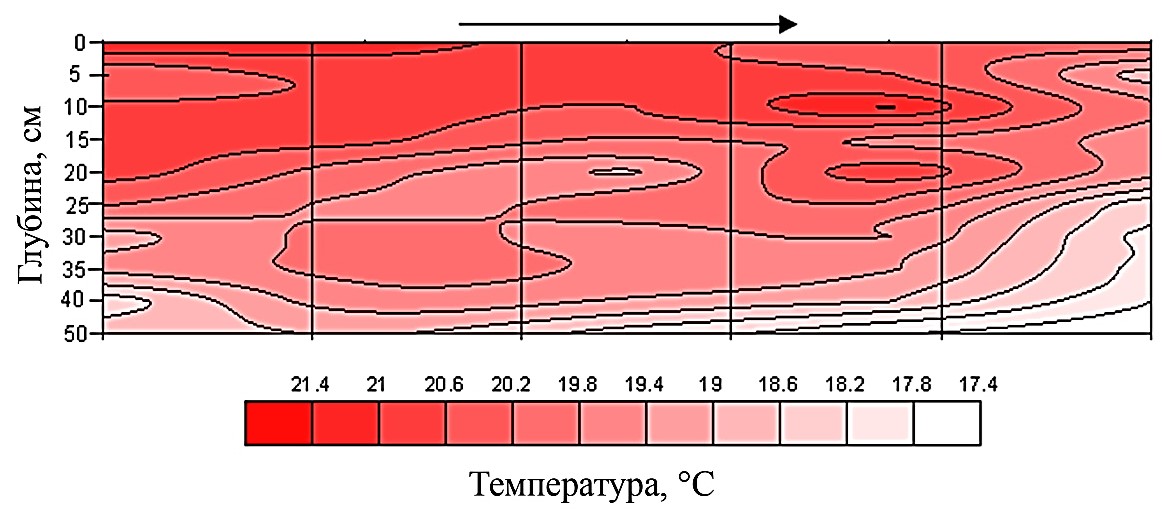Spatial distribution of soil temperature in the complex soil cover in the Cis-Salair region
DOI:
https://doi.org/10.31251/pos.v4i2.146Keywords:
soils, soil temperature, soil density, moisture content, microrelief, correlationAbstract
The aim of the study was to find out the regularity of soil temperature distribution along soil profiles located on the slope territories (Cis-Salair region, Russia). To achieve this goal, the following tasks were set: assessment of the temperature regime of the soils of the Cis-Salair region, which are in agricultural use; studying the regularities of diurnal temperature changes and identifying a possible relationship with the soil physical properties of the studied areas; revealing the dependence of the temperature field formation on soil properties.
Location and time of the study. The study was conducted in the forest-steppe zone in the Bugotak Hills in the Novosibirsk region, Russia (55°03′ N; 88°50′ E). The object of the study was a series of soils on a convex hillslope (411 m long) of southeastern exposure. Five soil profile pits were dug, not far from which autonomous temperature sensors (DS-1921G “Thermochron”) were installed at every 5 cm to a depth of 50 cm, recording the temperature every 30 minutes. The observation period was from July 1 to August 15, 2016.
Main results. The temperature field of the arable soils on the Cis-Salair slopes was laterally inhomogeneous. Our study showed that the spatial variability of such indicators as soil moisture and density significantly affected the thermal conductivity of soil horizons, which was the main reason for the temperature field heterogeneity. The relief, microrelief and slope exposition also played an important role in the redistribution of moisture, heterogeneity of the density of soil cover, and, consequently, contributed to uneven heating of the upper soil horizons. The observation of both the diurnal variation of soil temperatures under various weather conditions and their seasonal fluctuations found that the temperature differences in the adjacent soil series of the convex slope were 0.5–2 °С.
Conclusions. Soil temperature regime is a driving factor in the functioning of agroecosystems, determining the intensity of various soil processes. Studies based on the quantitative estimates of the intensity of subsurface processes at different temperatures are becoming increasingly in demand in various fields, especially in predicting erosion development, or, for example, in regulating the production process in agricultural ecosystems. Significant variation of soil temperature regime even within the one field should be taken into consideration for planning land use and adjusting local agricultural techniques.
Downloads

Downloads
Published
How to Cite
Issue
Section
License
Copyright (c) 2021 The Journal of Soils and Environment

This work is licensed under a Creative Commons Attribution 4.0 International License.






